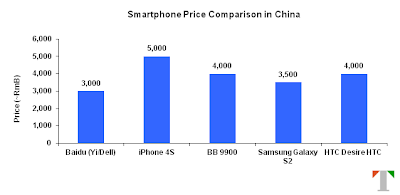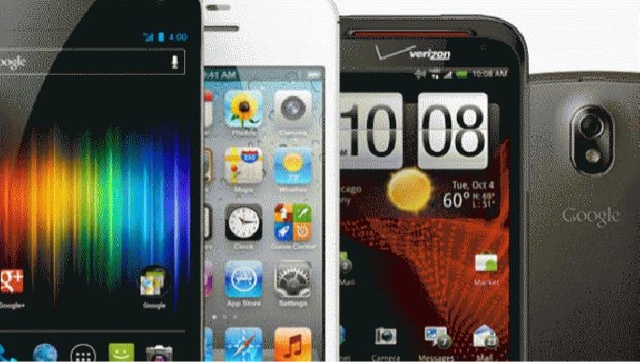Is there a solar-powered Smartphone in your future? Well we think
so, this is what's being done right now to bring that technology to reality.
Now that we're finally getting those jetpacks futurists have
promised, it's time to update our first-world wish list to include
solar-powered Smartphone’s.
The good news is that smart people are working on it --
including Apple. The company recently posted a job listing for an engineer with
experience with solar power.
Apple's job opening could be unrelated to any project that
even explores solar power -- the expertise required could be applied to other
thin-film technologies. But it's clear that Apple is interested in -- and
working on -- solar Smartphone technology.
In February, Apple filed a patent for a method of
integrating solar panels into a mobile touchscreen. The company has older
patents for solar gadgets as well.
Now, patents don't always equal intent. But the patents and
job listing have rumour mongers speculating about a solar-powered iPhone 6.
Forget about that. It's not going to happen. Solar technology
almost certainly won't be built into an iPhone within the next two years.
And if such a phone were to arrive on the market, it's very
unlikely to be totally solar powered. Solar panels on phones might extend
battery life, but phones will still have to be charged by plugging them in or
via wireless charging.
But never say never. In fact, it's very likely that advances
in thin solar panelling will make that technology irresistible for extending
battery life beyond what batteries themselves can achieve.
Why solar power failed on Android phones
Two low-cost solar-powered Android phones emerged in 2011.
Two years ago, Samsung announced a $350 solar phone called
the Replenish, which was advertised as environmentally friendly. (You can still
buy the phone for about $99 at Walmart or even less on other discount
electronics websites.)
The upside: The Replenish is made from about one-third
post-consumer recycled plastic. A solar panel on the battery cover extends
battery life when charged in sunlight.
The downside: It's an obsolete throwback that runs on
Android 2.2 (Froyo) and has a physical keyboard, a small screen and a
2-megapixel camera. And the solar panel is pretty weak: An hour of charging
gives you 20 minutes of talk time. Better than nothing, I guess.
The other solar-powered Android phone was a device called
the Umeox Apollo, which launched in February 2011. Counter intuitively, that
phone was targeted at the low end of the market. It had a tiny screen, a lousy
camera and other limitations. And it didn't gain any significant mind- or
market share. That may be why its Chinese maker dropped any mention of the
phone from its website.
Between 2006 and 2011, a handful of other solar-powered
Android phones emerged; all of them failed in the market.
The failed solar Android products remind me of the failed
fingerprint sensor Smartphone’s. Motorola built a fingerprint scanner into its
first Atrix phone. The Toshiba Portege G900 and G500 phones had them, too. Hitachi's Japan-only W51H
included a fingerprint reader. And there were others. None of them were popular
with customers.
All these efforts failed for the same reason the Android
solar phones failed: The technology wasn't ready for prime time. The
implementations were horribly ugly.
I'm hoping that Apple will eventually do for solar phones
what it did for fingerprint readers: Wait for the right technology, then
integrate it into a phone in a way doesn't destroy the aesthetics of the
device.
Still, there are some interesting Android projects. Take the
Earl, for example. It's a $300 solar-powered Android tablet for hikers and
campers. It's being self-crowd-funded and has far exceeded its fundraising
goals.
Unlike most solar phones and tablets, which seek merely to
extend battery life a little bit, the Earl is designed to run entirely on solar
power, with no need to ever be plugged into an outlet. It achieves this feat by
using a low-energy 1024x768 black-and-white E-ink touchscreen. Five hours of
charging gives you 20 hours of use, according to the company.
The tablet has various features that are useful for survival
in the great outdoors, including GPS, a thermometer, humidity and barometric
pressure sensors, and a compass. It also has a built-in walkie-talkie feature
and a radio that can pick up AM, FM and shortwave signals.
Why solar fails on phones
Despite huge demand for longer battery life on Smartphone’s,
the challenges to achieving that with solar technology are many. There's a
simple reason for that: Smartphone’s are small; they have only a tiny bit of
surface area for collecting light. On top of that, they're energy hogs, with
power-gobbling components such as touchscreens, various types of sensors and
powerful processors.
You'll note that the Earl device achieves solar
self-sufficiency with a tablet-size surface area and a screen that's about the
same quality as the ones on older Kindle models.
Smartphone’s can't be big enough and low-energy enough to
viably use solar power and still succeed in the market as popular gadgets.
That's especially true because apps are increasingly power- and
resource-hungry. Many apps constantly ping for connectivity and location data
and make other energy-intensive requests. Games tax graphics and processing
hardware.
Still, there's hope. UCLA eggheads are working on a
see-through film that functions as a solar panel. This would theoretically
enable touchscreens to harvest energy from light. The technology is a long way
from being ready for widespread use. It can currently convert only about 7.3%
of the energy it receives into usable electricity.
Researchers at several other universities and companies
around the world are also chipping away at the problem of integrating solar
power into Smartphone’s.
A company called Alta Devices is working on making gallium
arsenide cell thin films that could be used on Smartphone’s. It even built a
prototype for a Samsung Galaxy phone.
The Chinese telephone giant TCL Communication is reportedly
working with a French solar company called Sunpartner to integrate solar panels
into Smartphone screens. Sunpartner's Wysips technology involves an ultra-thin
transparent photovoltaic layer that sits under a touchscreen.
Despite the apparent limitations, I'm very bullish on the
use of solar power for Smartphone’s.
Why (and how) your Smartphone will eventually be
solar-powered
I believe it's inevitable that within a few years, we'll
never have to plug in our Smartphone’s or think about power. Here's how I think
that's going to happen.
First, battery technology will keep improving slowly, and
cells will charge faster and last longer than today's batteries of the same
size.
Second, I believe it's only a matter of time before Smartphone’s
have solar panels covering both the front and the back, using different
technologies. This will enable your phone to soak up energy no matter which
side is facing up when you put it down.
Third, wireless charging technology will take over. Tables,
lamps and desks will all have wireless charging capabilities, so phones will
pick up juice whenever they're placed on those surfaces.
Fourth, the wearable technology revolution will reduce our
use of Smartphone’s. In fact, as a daily Google Glass user, I find that I'm
using Glass to check the time, for notifications, to reply to emails and do other
run-of-the-mill tasks as my phone spends more time in a deep sleep.
But the biggest gains will come from improvements in power
management. Motorola's new Moto X phone -- a device that I also use every day
-- is a marvel in power management. It achieves this by using dedicated,
low-power processing (originally developed for smartwatches) to listen for
voice commands and keep tabs on the phone's location and orientation. It also
has an AMOLED screen and is equipped with Motorola's Active Display technology.
This combination eliminates the need for users to fire up the full screen and
phone for common tasks like checking the time and checking for notifications.
The Moto X is just one example of how an unglamorous aspect
of Smartphone design can deliver significant improvements: Ongoing advances in
power management may one day yield a phone we never have to charge.
Yes, solar-powered Smartphone’s are coming. But by the time
they arrive, the technology won't be a big deal. Our phones will use multiple
technologies, including solar, that will work together to eliminate the need to
ever plug them into the wall.
Self-charging Smartphone’s will be the second most
convenient aspect of our lives in the years ahead -- right after commuting to
work via jetpack, or teleportation.






























